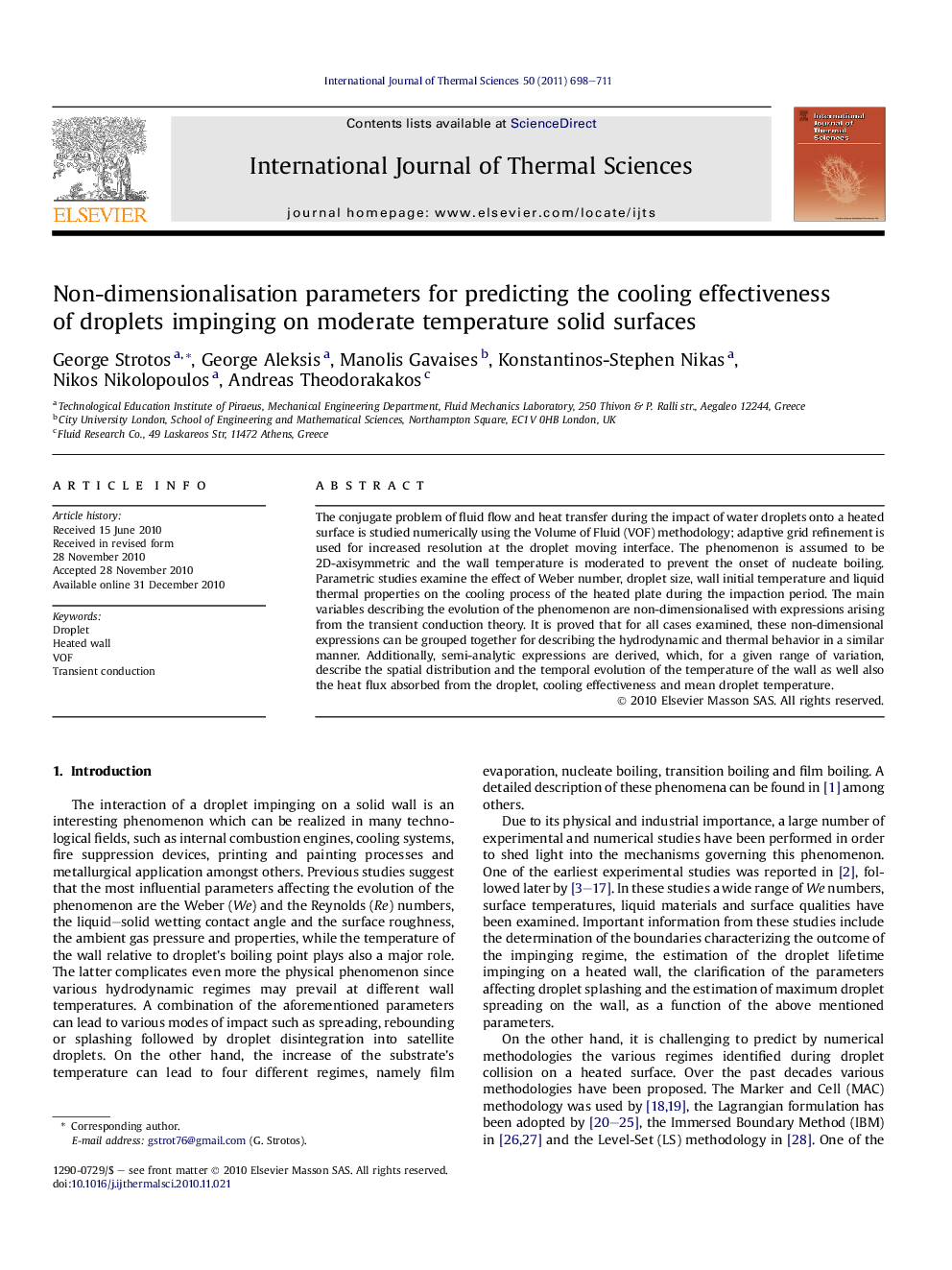| Article ID | Journal | Published Year | Pages | File Type |
|---|---|---|---|---|
| 670152 | International Journal of Thermal Sciences | 2011 | 14 Pages |
The conjugate problem of fluid flow and heat transfer during the impact of water droplets onto a heated surface is studied numerically using the Volume of Fluid (VOF) methodology; adaptive grid refinement is used for increased resolution at the droplet moving interface. The phenomenon is assumed to be 2D-axisymmetric and the wall temperature is moderated to prevent the onset of nucleate boiling. Parametric studies examine the effect of Weber number, droplet size, wall initial temperature and liquid thermal properties on the cooling process of the heated plate during the impaction period. The main variables describing the evolution of the phenomenon are non-dimensionalised with expressions arising from the transient conduction theory. It is proved that for all cases examined, these non-dimensional expressions can be grouped together for describing the hydrodynamic and thermal behavior in a similar manner. Additionally, semi-analytic expressions are derived, which, for a given range of variation, describe the spatial distribution and the temporal evolution of the temperature of the wall as well also the heat flux absorbed from the droplet, cooling effectiveness and mean droplet temperature.
